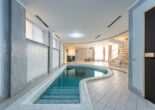Discover the pros, cons, and best options for pod-style and capsule living in Tokyo. From micro-apartments to long-stay capsules, find minimalist rentals that suit your lifestyle and budget.
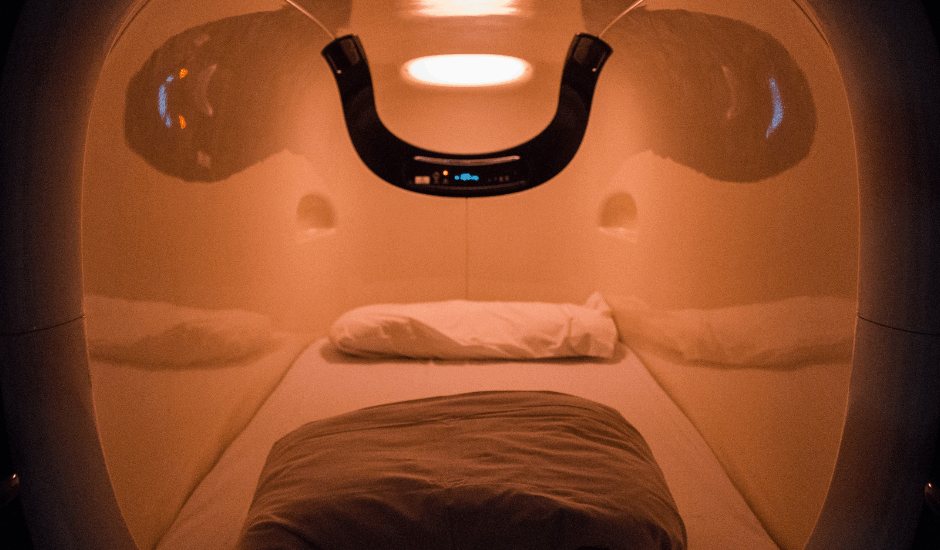
As if accommodations in Tokyo can’t get any smaller, capsule-style rentals or pod studios are quickly gaining traction among tenants who require living spaces that are affordable and accessible without compromising on comfort. Whether you’re a digital nomad, a student, or prefer a minimalist lifestyle, it’s worth checking out this accommodation option.
Introduction to Capsule-Style or Pod Living
The entire concept of Pod Living originates from Tokyo’s iconic Nakagin Capsule Tower (1968), which features micro-apartments, typically between five and eight sqm, and equipped with smart built-ins like bunk beds and fold-down desks. They even have private bathrooms. So you get all the daily essentials, including Wi-Fi, at an accessible spot.
Although the capsule concept was revolutionary, it was way ahead of its time and didn’t match actual housing preferences then. The tower is also located in Ginza, one of the most expensive areas in Tokyo, and the land value eventually outweighed the heritage value, so redevelopment was the most financially logical option for many pod owners.
As time passed and trends shifted, preferences changed once more, and now renters can opt for standalone micro-apartments (private little studios with a bathroom), capsule-style sharehouses (private pods with shared common spaces,) or even hybrid buildings (combining pods with one-room apartments).
2. Pod Living is Best for…
Before we get into the details, let’s first expound on the target market of this type of accommodation. Pod living is best suited for digital nomads or remote workers since they have Wi-Fi-ready units. They’re great for students or interns because they’re cheaper than central Tokyo dorms. Professionals who don’t require a lot of space but location is the top priority also prefer pod living. Lastly, minimalists who don’t need much storage space often enjoy the flair of pod living.
Meanwhile, this option isn’t for two occupants because pods are strictly for one tenant only. Those with lots of furniture or belongings, or those who prefer cooking their meals, will find the pods lacking in space and a private kitchen area. Also, home entertainers won’t be able to invite guests over because the space is too small.
3. A Comparison of Pod Living, Capsule Hotels, Micro Apartments and Shared Flats
Here’s a quick overview of the differences between the tiny living options in Tokyo.
| Feature | Pod Apartment | Capsule Hotel | Long-Stay Capsule | Micro-Apt | Shared Flat |
| Privacy | Full, private unit | Private bed only | Semi-private pod/bed | Full private unit | Shared living areas |
| Bathroom | Private | Shared | Shared | Private or en-suite | Often shared |
| Kitchen | Often shared | None or shared | Shared | Private but not full-size | Often shared |
| Size | ~5–10 m² | ~2.5 m² capsule | ~2–4 m² sleeping pod | 12–25 m² | 15 m²+ private rooms |
| Rent | ¥60,000–¥120,000 | ¥3,000–¥6,000/night | ¥40,000–¥70,000/month | ~¥100,000+ | ¥50,000+ per person |
| Ideal Stay | Long term | 1–7 nights | 30 days+ | Long-term | Long-term |
| Location | Prime Tokyo areas | Tourist districts | Residential Tokyo | Varies | Varies |
| Best For | Minimalists, workers | Travelers | Students, budget renters | Singles, expats | Friends, flatshares |
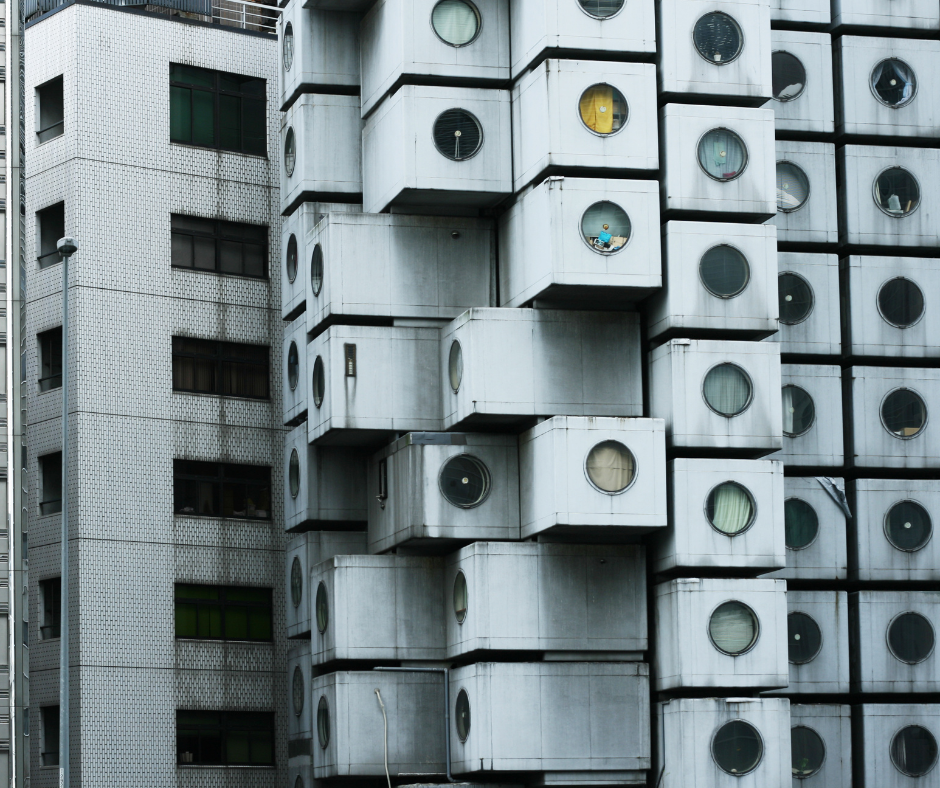
4. Tokyo Examples
Pod-style apartment
- Ququri Micro-Apartment (Various locations like Harajuku and Shibuya)
- Size: ~8–10 m²
- Selling point: Prime location plus you get privacy in a pod-style layout
- Rent: ¥62,000–¥75,000/month
- Listing/website
Capsule Hotels (Short-stay pods, 1-7 nights only)
- Nine Hours Otemachi Capsule Hotel
- Selling point: Clean, modern and affordable compact pods
- Price range: ¥3,000–¥4,000/night
- Listing/website
- Shinjuku Kuyakusho‑mae Capsule Hotel
- Selling point: Prime location, convenient for late-night check-ins, has lounges, pod beds and shared bath
- Price range: From ¥3,000/night
- Listing/website
Long-Stay Capsules (Dorm-style pods in share houses)
- Borderless House – Shibuya‑Ikejiri
- Selling point: international sharehouse with semi-private bunk beds, multicultural living with utilities and Wi-Fi included
- Rent: ¥60,000–¥80,000/month
- Listing/website
- Oakhouse Dormitory Pods (Shinjuku or Ojima)
- Selling point: Includes common kitchen and lounge, no key money, short-term flexibility and budget friendly
- Rent: ¥50,000–¥65,000/month
- Listing/website
Micro Apartments (Private mini studios)
Note: micro apartments often overlap with Pod Apartments but emphasize full privacy and units with all the necessities
- Studio Type Apartments by Interwhao
- Size: ~7–15 m²
- Selling point: Fully private studio units with kitchenette and bathroom, no deposit/guarantor/key money required
- Rent: ¥45,000–¥96,000/month depending on location and unit size
- Listing/website
Shared Flats (Private room and shared facilities)
- Oakhouse Private Room Share Houses (Tokyo-wide)
- Private room size: ~10–15 m²
- Selling Point: Furnished, utilities and Wi-Fi included, no key money, ideal for international tenants
- Rent: ¥70,000–¥90,000/month
- Listing/website
- Borderless House Private Room Listings (Shibuya, Nakano, Waseda)
- Private room size: ~10–15 m²
- Selling point: Social atmosphere, ideal for students and professionals
- Rent: ¥70,000–¥85,000/month
- Listing/website
Pros and Cons of Capsule-Style Living You Should Be Aware of
Here’s a clear analysis of pod-style living to help you decide if this accommodation type could fit your lifestyle
| Pros | Cons |
| Often located close to city centers like Shinjuku, Tokyo and Ueno | Limited space for anything other than sleeping or working. |
| Cheaper option compared to full one-room apartments in the same locations | Shared common rooms like the kitchens and bathrooms |
| Efficient layouts with smart functionality | Often built with thin walls |
| Minimal upkeep, often furnished, and with flexible lease options | Not ideal for couples, only solo living |
| Ideal for work- or sleep-focused lifestyles | Lack of storage space, aside from built-in cabinets |
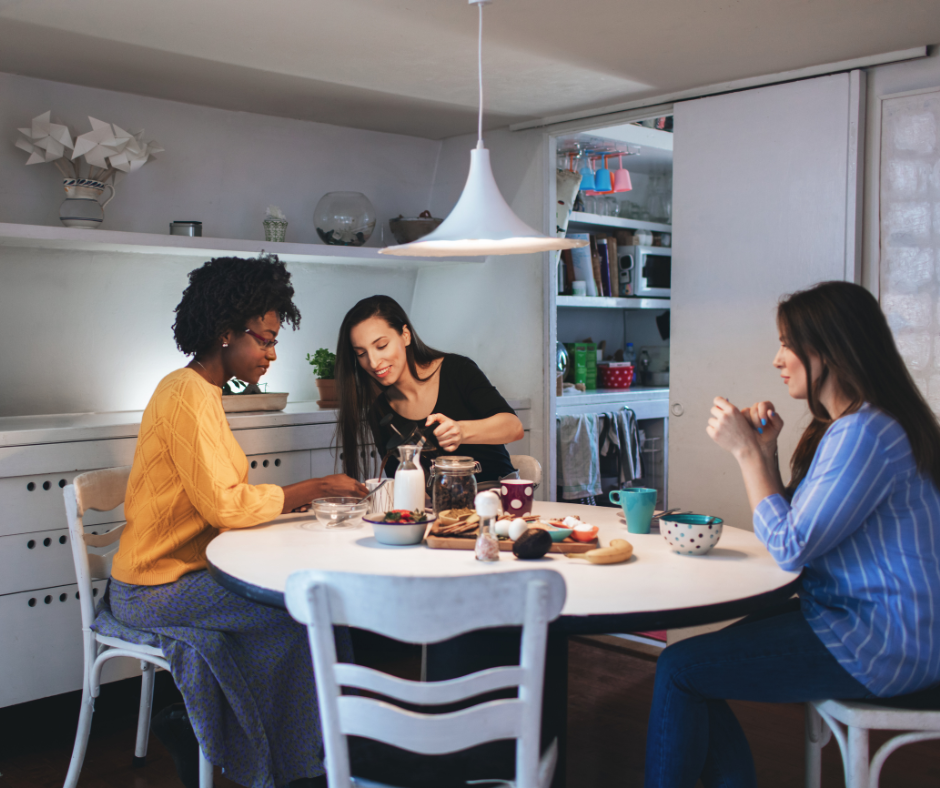
6. Already Got a Pod? How to Make it Feel Like Home
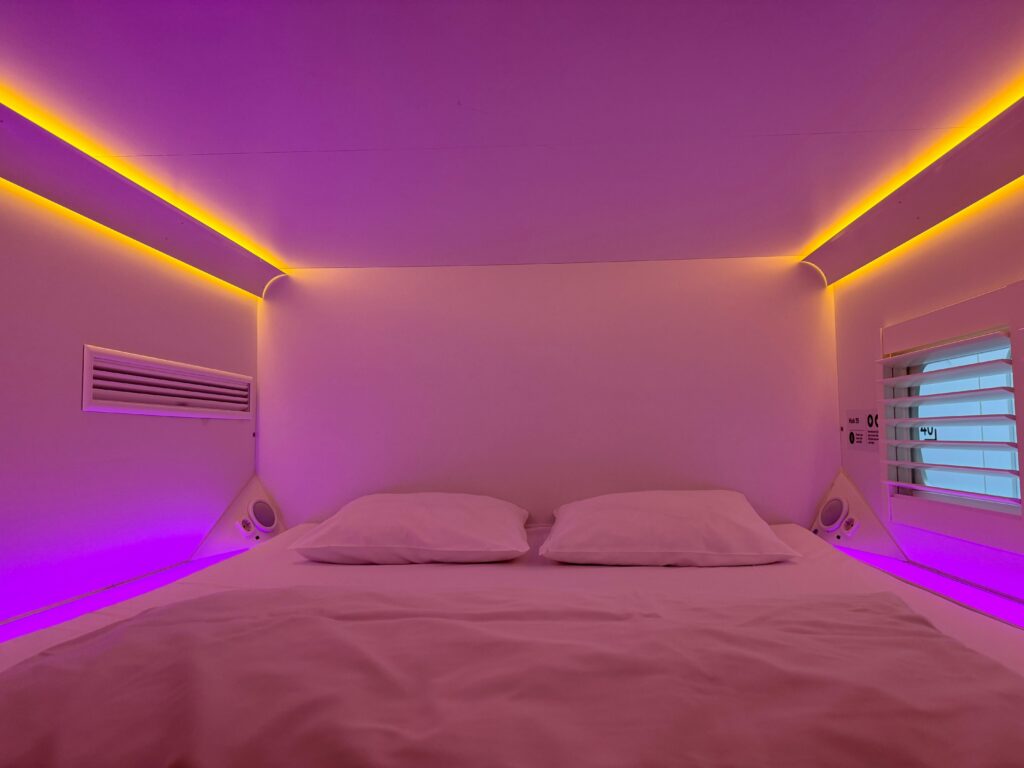 This section is for those already living in pods and would like some tips on making their space feel like a home. The first is maximizing space. If you don’t have the option to do so horizontally, then your next move would be taking advantage of the usually tall walls. Add hooks (if allowed) or install thin but tall shelving.
This section is for those already living in pods and would like some tips on making their space feel like a home. The first is maximizing space. If you don’t have the option to do so horizontally, then your next move would be taking advantage of the usually tall walls. Add hooks (if allowed) or install thin but tall shelving.
Next would be mood lights like LED strips to add some warmth to the space or one or two frames for that homey touch. Since the space isn’t often equipped with a dining area, you can get a folding table for meals, studying, or other activities. When not in use, simply fold and stow away. Lastly, you can get acoustic earplugs if noise is an issue.
7. The Legal or Logistical Issues of Capsule Living
Just like any other rental, it’s important to be clear on your monthly lease and clarify whether utilities are included in the rate. Also, double-check for other hidden fees like key money or a cleaning fee upon moving out.
When it comes to mail and parcel deliveries, pod addresses may not have a designated mailbox, so it’s recommended to check where your nearest self-pickup point is located (often at big supermarkets or convenience stores).
If the space you’re looking at has more empty space, it’s also worth asking if you can install a mini fridge or even a microwave to help you save on food costs.
8. How to Find Capsule-Style Listings
Now that you’re ready to find a pod-style unit, you can use the following keywords in search sites to get started: “マイクロアパートメント” (micro apartment) / “カプセルタイプ賃貸” (capsule-type rental)/ “ポッドハウス” (pod house).
You can also go to real estate agents that specialize in studio apartments. Since they’re already close to the size specification, they might know of micro accommodation listings. Another direction would be to look at companies that specialize in these types of rentals, such as Oakhouse and Borderless, and inquire straight from their websites.
9. Take a Look at Real Reviews and Feedback
Review: “This is an awesome capsule hotel for solo travelers… well over 50 pods… great for meeting other travelers.”
Highlight: Excellent for short stays, social ambiance, and convenience. – Nine Hours Hamamatsucho / Otemachi (The Broke Backpacker, 2025)
Review: “Borderless House was my first love… honestly, I’ve had the best experiences in Tokyo while staying with them. My roommates were always amazing…”
Highlight: Community-rich environment, support for foreigners, and positive resident culture. – Living in a Share House (Jef Quin, 2024)
Overview: Tokyo’s ultra-compact “kyosho jutaku” reflects minimalist lifestyles with ingenious space-saving design.
Highlight: Residents praise creative layouts and full functionality within 5–25 m² studios. – Micro-Apartments in Tokyo (e-Housing, Sept 2024)
10. Final Takeaway
Do you value the time and convenience it takes from your accommodation to your work/school? Do you already live a minimalist lifestyle? Are you ok with shared bathrooms or kitchens? You don’t really need a big kitchen, full furniture, or space to entertain guests? You want a short-term or flexible studio rental? If you answered yes to all of those questions, it might be high time to give pod-style living a try!
Stay tuned for more exciting content like this! Follow us on our social media platforms and check out our blog regularly to stay updated on the latest news, trends, and insider stories from Japan. Don’t miss out on future updates — sign up for our newsletter for exclusive content delivered straight to your inbox!
Related Articles
Warning: Undefined array key "sfsi_threadsIcon_order" in /home/veremosglobal/tokyoroomfinder.com/public_html/blog/wp-content/plugins/ultimate-social-media-icons/libs/controllers/sfsi_frontpopUp.php on line 165
Warning: Undefined array key "sfsi_blueskyIcon_order" in /home/veremosglobal/tokyoroomfinder.com/public_html/blog/wp-content/plugins/ultimate-social-media-icons/libs/controllers/sfsi_frontpopUp.php on line 170
Warning: Undefined array key "sfsi_bluesky_display" in /home/veremosglobal/tokyoroomfinder.com/public_html/blog/wp-content/plugins/ultimate-social-media-icons/libs/controllers/sfsi_frontpopUp.php on line 266



